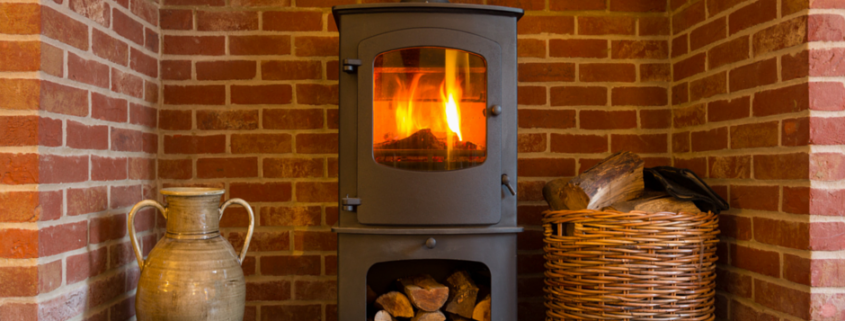Is your heating source safe?
Wood Stoves and Wood-Burning Fireplaces
It can be comforting to curl up beside a crackling fireplace, or gather family and friends around the warmth of a wood stove on a wintry night, especially during the holiday season. Take the necessary steps now to ensure that wood stoves and fireplaces are operating properly and free of potential hazards.
Safety and Maintenance Tips
- Inspect and clean your chimney. The Ontario Fire Code requires homeowners to maintain their heating appliances in safe operating condition. The Technical Standards and Safety Act, 2000 requires homeowners to have heating appliances inspected, including chimneys or vents.
- Check stove pipes and connections. Ensure that screws are located at every joint and that each connection is a tight secure fit. Also look for signs of dark staining or white powder (also referred to as leeching) at every joint. Rust is a clear sign that it is time to replace the stove pipe.
- Check for creosote. Creosote is a by-product of combustion that can form quickly on the interior walls of your chimney. It is a black or brown gummy substance that builds up on the flue and can be seen using a flashlight. Once a sufficient amount of creosote builds up, it can catch fire, so it should be checked frequently and removed.
- Check walls for excessive heat. If the wall above your fireplace or wood stove gets very hot, it could be a sign of improper chimney installation and a potential fire hazard.
- Protect walls and floors from heat and sparks. Keep combustible objects away from your wood stove or fireplace and always use a properly fitted screen to cover the fireplace opening. Floors and walls should be protected with noncombustible shields.
- Install a rain cap. A rain cap on top of your metal or masonry chimney will prevent moisture from getting inside and causing rust and corrosion. If the cap has a spark screen, inspect it regularly for blockages.
- Watch for the warning signs. Look for corrosion or rust on the outer shell of a metal chimney. Watch for bulges or corrosion of the liner as well. Loose bricks, crumbling mortar, dark stains and white powder all indicate problems with a masonry chimney. They should be repaired immediately by a qualified heating contractor or mason.
- When in doubt, call an expert. The safest and most practical way to handle the annual maintenance of your chimney, woodstove and fireplace is to contact a WETT* Certified Chimney Sweep. It is a relatively small investment for peace of mind.
*Wood Energy Technology Transfer
Compliments of TSSA



